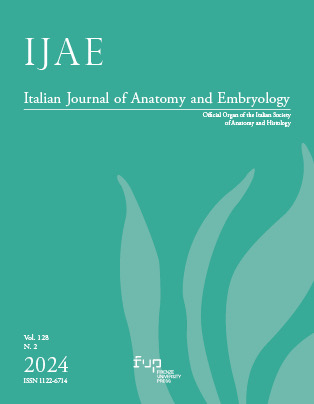Published 2024-12-31
Keywords
- Human Anatomy,
- cadaveric dissection,
- gross anatomy education,
- hands-on learning,
- clinical knowledge
How to Cite
Copyright (c) 2024 Federica Fulceri, Larisa Ryskalin, Gabriele Morucci, Paola Soldani, Stefano Ratti, Lucia Manzoli, Marco Gesi

This work is licensed under a Creative Commons Attribution 4.0 International License.
Abstract
A deep understanding of gross anatomy is imperative for healthcare professionals for clinical examination, diagnosis, and safe and effective treatment of their patients. In this regard, satisfactory assessment of musculoskeletal disorders by physical therapists (PT) requires an in-depth knowledge of the morphology, position, and spatial relations of the structures of the locomotor system. Within this frame, traditional anatomical teaching and learning practices alone appear as a limit. Although they represent the mainstay of anatomy education, formal lectures, textbooks, or atlases only provide a theoretical knowledge of gross anatomy. Contrariwise, cadaver dissection offers unique advantages, namely appreciation of 3D concepts of body organization and spatial relationships between anatomical structures, being the most significative ones. Again, hands-on educational experiences can stimulate student interest, increase knowledge retention, and enhance the development of clinical skills. Thus, the use of human cadaver dissection is of paramount importance in the development of PT’s core competencies, such as clinical education and reasoning. Therefore, the present study aimed to examine the appraisal and attitude toward the cadaver dissection experience of physical therapists (n=56) attending the postgraduate course in Sports Physiotherapy at the University of Pisa. The one-day human cadaver dissection course was held at the Institute of Human Anatomy of the University of Bologna. At the end of the course, the PT were invited to complete a self-administered questionnaire. All participants agreed that dissection is important, relevant, and highly beneficial to their anatomy education. They also perceived that this educational experience has the potential to improve learning outcomes that are essential to the development of healthcare professionals. The results presented in this study provide preliminary evidence that cadaver dissection is a highly valuable tool for developing fundamental skills and competencies in the training and professional careers of PT.
Metrics
No metrics found.



